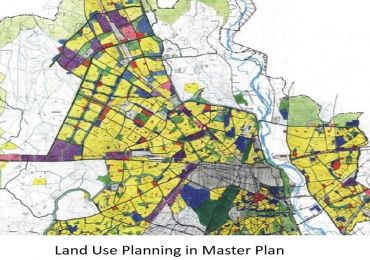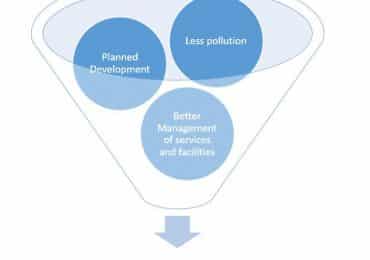What is Land Use Planning?
Land use planning is a planning technique to improve the quality of life in urban areas. This widely adopted technique is one of the most successful methods followed today. According to this various socio-economic activities are allocated space in a particular area, or in other words, areas are assigned specific activities based on various parameters which will help in increasing overall efficiency of the urban area. The major categories on the basis of activities include residential, commercial, transportation, public, and semi-public use, government offices, etc. This categorization is considered essential to keep a balance of different activities taking place in an area.
Application of land use planning in planned development
The planned development is essential for sustainable development and thus the optimal use of available resources. Since resources are limited it becomes necessary to use the resources wisely. Urban areas which are characterized by high population density are required to develop as per proper plans which are known as development plans or master plans. These plans provide both theoretical and spatial information which will govern the growth of the towns and cities. Land use planning forms most crucial part in these plans and is shown in the land use map of such plans. It is done utilizing color coding, i.e., by assigning a specific color for a particular activity on the map. On maps which cover a large area, the predominant land use is shown, and colors are given as per single level hierarchy, no further details of activity are shown under the given land use. For example, only the residential area will be shown and the possible additional information about the government housing, embassy areas, plotted housing etc. will not be shown.

Importance of land use planning
Land use planning is essential for governing the growth of the different activities. A certain percentage of land is reserved for various activities. This helps in balancing all the activities and avoiding the excess of a particular activity. It also helps in keeping a check on conflicting activities such as residential and industrial as the pollution from industries will have an adverse effect on the people living nearby. It also helps in pollution management by segregating different activities using certain restrictions and regulations. These restrictions and categorizations are called zoning, categorization of permissible and non-permissible activities, conforming and non-conforming land uses, etc.
Further, land use planning in the master plan is binding for all the activities, and no development should take place which does not conform to the assigned land use. For example, a person can not carry-out commercial activity in an area marked for a residential/ industrial purpose. In case someone is found to be violating the rules then he/she is entitled to legal action against them. The complete information about the permitted activities is provided in different plans which must be followed.
Benefits of land use planning
As discussed above the primary benefits include better quality of life. This is achieved because of the reduced need of traveling, reduced travel distance and time. Better utilization of resources, planned development, proper distribution of resources, optimal utilization of land, helps in reducing pollution and thus improving the environmental conditions. This helps in improving the overall management of different facilities and services being provided in the cities.

Problems faced & criticism of land use planning
There are various instances where land use planning was not successful and is often criticized. One of the significant drawbacks is keeping the land use maps confidential and keeping a check on land speculation after they are published. This is so as it assigns various activities which will take place in a particular area which has a direct relationship with the land value and impacts it significantly. It is evident that a person with land under commercial space will get much better prices as compared to residential land. To prevent this in many development acts it is required that the government should acquire all land and then develop, but this is not possible in the existing situation. Another drawback is a large number of applications for change of land use, and the actual development does not take place as per the plan prepared because of improper implementation.

It is often criticised as it takes away the right of the landowner to do the desired activity on his/her land, the activity must be carried out in accordance to the assigned land use. Since the land use change requests are often not entertained people feel cheated as it restricts them from using the land as per their will. Also, the team which is involved in the preparation of the plan is blamed for assigning the land uses for their benefit. Since land use plans are legally binding and mostly rigid, they cannot be changed easily as a long procedure needs to be adopted.
Read about: Land Use Planning in India, Types of Development Plans in India, Delhi Master Plan 2021